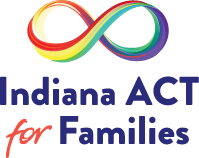Frequently
Asked
Questions
If you cannot find an answer to your question in our FAQ, you can always contact us, and we will be with you shortly.
ABA therapy is a scientifically validated approach to help build useful learning and behavioral skills for children with autism that will help them lead better and more productive lives as they grow into adolescence and adulthood. As the most scientifically studied intervention for autism, it aims to help shape existing skills, develop new skills, and decrease problem behaviors. ABA therapy is intensive, often provided in a one-on-one setting with the child, tailored for where they are on the autism spectrum and their individual challenges. The best outcomes are linked to early intervention, so the benefits to the child, their family, and society are vitally linked to ensuring access to quality ABA therapy at a young age.
On average, the economic cost for the family is estimated at $60,000 a year throughout the span of childhood, with most of that cost related to special services and lost wages for one or both parents taking on much greater demands at home. Mothers are disproportionately impacted economically, as they tend to serve as the child’s case manager and advocate and are unable to work outside the home.
No. ABA therapy is also beneficial to people with intellectual disabilities such as down syndrome. This therapy can help with learning how to express yourself, socialize with others, and daily life skills like brushing your teeth.
ABA therapy is also helpful for both children and adults – although early intervention has been shown to be more impactful.
The COVID pandemic brought extended suspension of a range of healthcare services in Indiana, and autism services were hit especially hard because they are best provided one-on-one. The disruption to autism services caused a sharp increase in vulnerability for children with autism, particularly where ABA therapy was disrupted for extended periods. It also caused already high turnover rates among qualified providers to jump from 40% as a best-case before the pandemic to around 100% statewide today, further challenging providers’ ability to increase access to quality care. Given the heightened vulnerability of the children depending on these services, reducing access to ABA therapy through cuts in reimbursement rates will add further stress to the system and the families bearing the costs.
ABA therapy is a resource saver, and cutting reimbursement rates now will mean much bigger costs in the future. Early intervention is crucial. Studies show that the earlier a child receives therapy, the better the outcomes are for that child, including a more independent life in the long term. Services for adults with autism have a much higher cost than services for children – an estimated $175 to $196 billion a year, compared to $61 to $66 billion a year for children. So, if Indiana cuts coverage of this important therapy and reduces access to ABA therapy, waiting lists will expand, early intervention will decrease, and the public costs for adolescent and adult care will balloon over time. We do know that nearly half of 25-year-olds with autism today have never held a paying job, which is partly a result of less access to early interventions over a decade ago. As a public health priority, we need to improve outcomes for people with autism, not roll them back. As a purely fiscal and economic concern, it’s a question of paying the right amount now or paying a lot more later.
Overall, thousands of children are currently receiving ABA therapy in Indiana with a waitlist also in the thousands. One family partnered with our coalition waited almost a full year before their child was able to access ABA thearpy. That’s a year of intervention her child will never get back.
There are also waiting lists for children to receive diagnostics and be identified for autism services, which is hard to estimate accurately. If the access to quality care, particularly for early intervention, is cut now, these waiting lists will grow exponentially and outcomes will grow poorer.
Indiana has taken a lead in applying effective diagnostics for autism on a wider scale, and the current identification rate by Indiana’s public school systems is 1 in 66 children. Better diagnosis like in Indiana allows for greater opportunities for early intervention, such as ABA therapy, and better outcomes for more children. States which don’t use Indiana’s diagnostic approach have a larger number of children with autism without access to early interventions, and they have poorer outcomes. This means that those states bear much higher economic and public costs than Indiana does today. Cutting access to quality care now will reduce the advantages we now have over those states in the public health, economic and fiscal categories.
The federal Free and Appropriate Public Education (FAPE) Act ensures all children with autism in Indiana are provided appropriate education in the public school system, usually through a specialized learning plan. Most schools will offer one or more options, including mainstreaming, one-on-one or half-and-half specialized instruction, or traditional special needs classes with some element of mainstreaming. Few schools, however, offer all these options. ABA therapy providers in Indiana partner with school districts, especially in rural parts of the state where resources are more limited. Reducing access to therapies designed to improve skills and decrease problem behaviors will disrupt these partnerships and add strain to the public school system.


